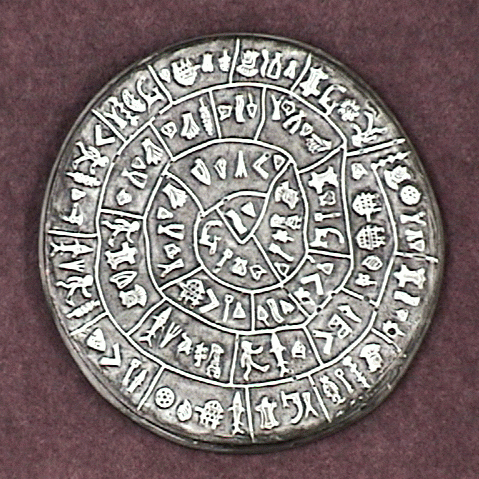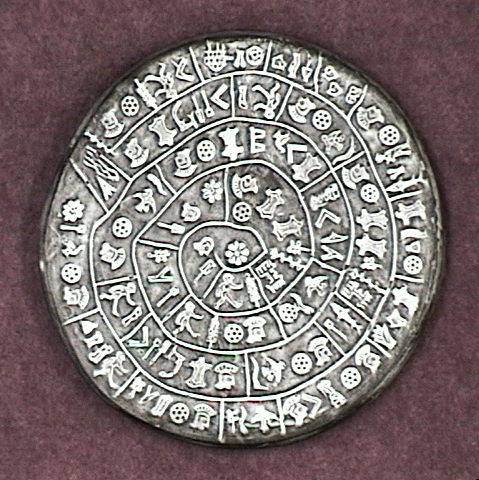The Phaistos Disk
(An Undeciphered Code)




The Phaistos disk was discovered in 1908 in southern Crete,
and apparently dates from about 1700 B.C.
It is a two-sided, circular clay tablet, imprinted on both sides,
with symbols in a spiral pattern. These symbols were impressed using
a set of stamps, rather than being hand-engraved. This suggests
a facility for large-scale production of printed material; however,
no other samples of the script have ever been found, so the material
available for decipherment is very limited.
The disk contains a total of 242 distinct symbols, broken into 61 groups.
Many of the symbols are pictures of clearly recognizable objects; however
attempting to interpret these literally does not lead to any obvious
decipherment of the disk. Speculation has thus arisen that the pictograms
are somehow being used phonetically, perhaps in a manner similar to
Egyption hieroglyphics.
Another speculation is that the disk is an artifact having
some ceremonial religious function, and does not represent
a sample of a developed writing system. This would account for the
lack of other exemplars. On the other hand, the use of stamps and implied
mass-production capability suggests that other examples may yet be
discovered.
The images above were taken from a replica of the disk in the possesion
of the author of this page, and colors and microtextures appearing on
the tablet do not necessarily reflect properties of the original.